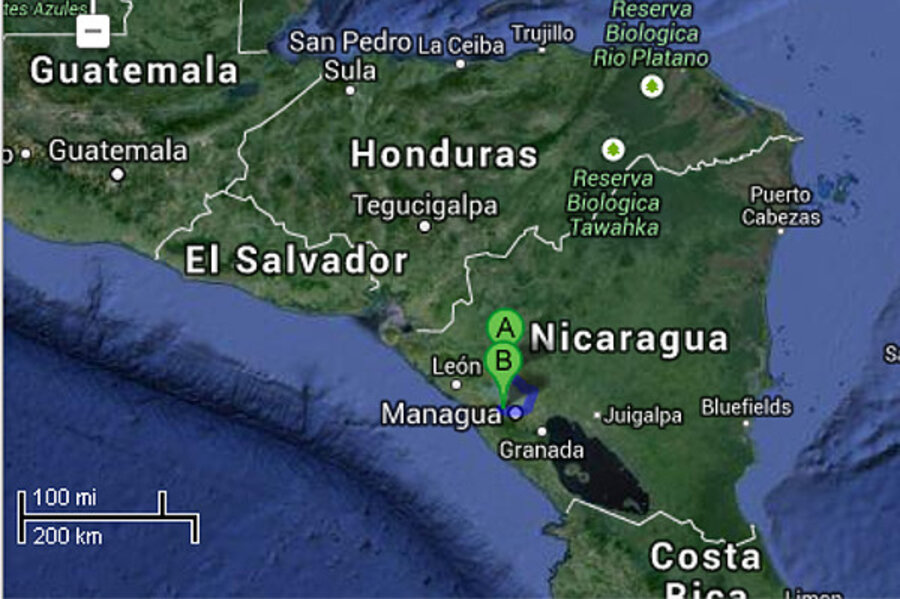Nicaragua: Earthquake and aftershock shake Nicaragua's western coast
A strong earthquake hit western Nicaragua on Thursday, quickly followed by an aftershock about 20 miles to the south.
The US Geological Survey said the 6.1-magnitude earthquake struck at 5:27 p.m. local time (23:27 GMT), and was centered on the northern shore of Lake Managua, about 6 miles west of Valle San Francisco. The earthquake originated 6 miles below the surface of the Earth.
The aftershock struck about half an hour later, at 6:01 p.m. This earthquake, on the southern shore of the same lake, was a magnitude 5.1 and originated about 8 miles down, according to the USGS.
Earthquakes are fairly common along Nicaragua's western coast, as it sits at the boundary between two of Earth's tectonic plates, the Cocos plate and the Caribbean plate. The Cocos plate is made up of thin but dense oceanic crust, born in the volcanoes of the mid-ocean trenches.
When that dense, volcanic crust collides with the comparatively light rock of the Caribbean plate, gravity forces the heavier plate down. The Cocos plate is pushing into the mantle at a rate of about 3 inches per year, which is about average for plate motion on Earth.
This collision causes frequent earthquakes and numerous active volcanoes along the western coast of Central America. Thursday's two earthquakes were shallow for a subduction zone. Some earthquakes in the region have been measured over 150 miles deep.
"Since 1900, there have been many moderately sized intermediate-depth earthquakes in this region," says the USGS, "including the September 7, 1915 M7.4 El Salvador and the October 5, 1950 M7.8 Costa Rica events."
Earthquake magnitudes are measured on a logarithmic scale. For every number increased, the amount of shaking on a seismograph goes up by a factor of 10 and the amount of energy released goes up by a factor of 31.6. The first of the two Nicaraguan earthquakes released more than 30 times as much energy as the aftershock that hit half an hour later. Neither was powerful enough to trigger a tsunami in Lake Managua.
"There are no injuries, no loss of life so far, nor even any significant material losses," announced Nicaragua's first lady Rosario Murillo on local radio.
Editor's note: The original version of this story misstated the number of injuries reported.







